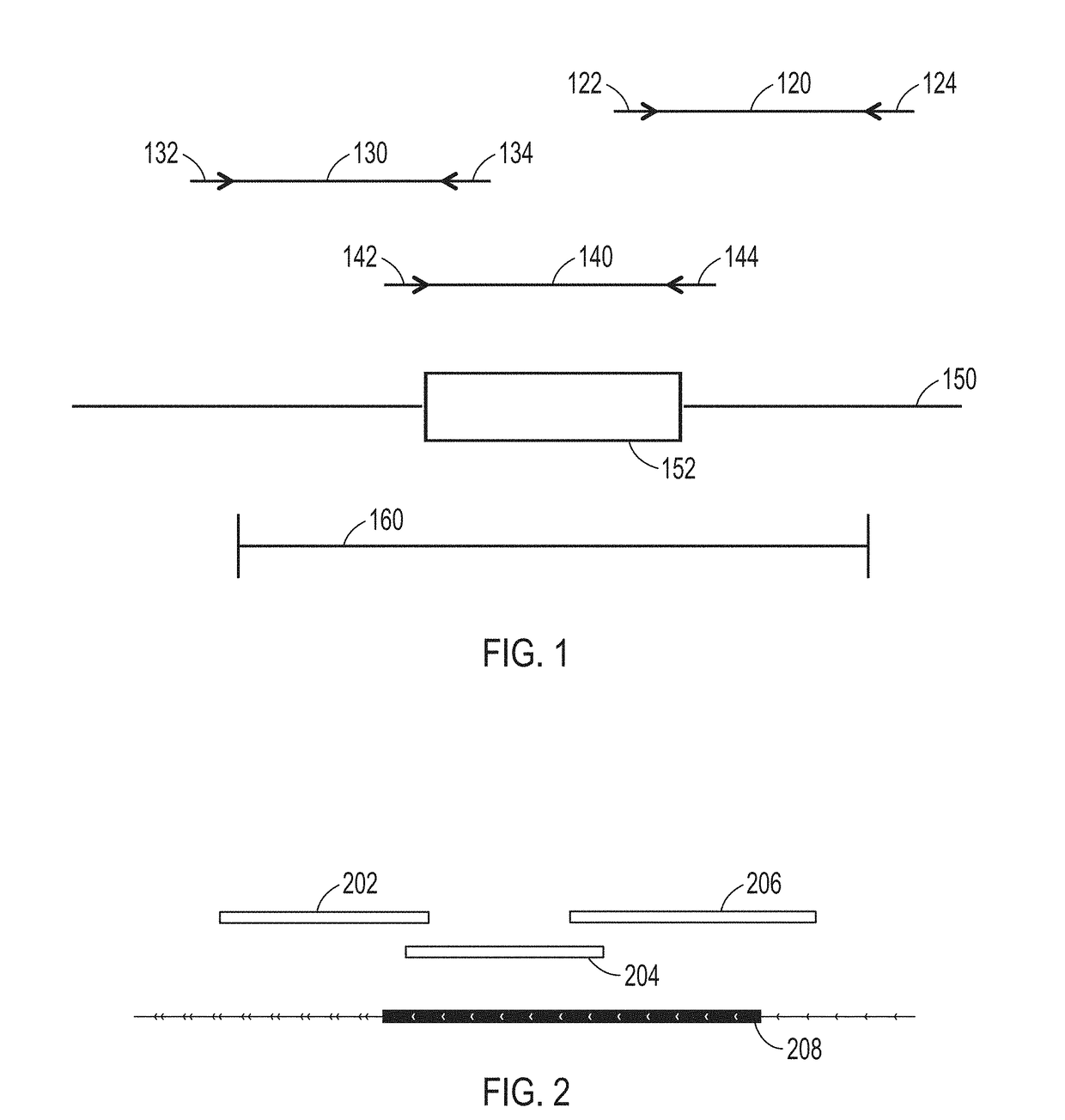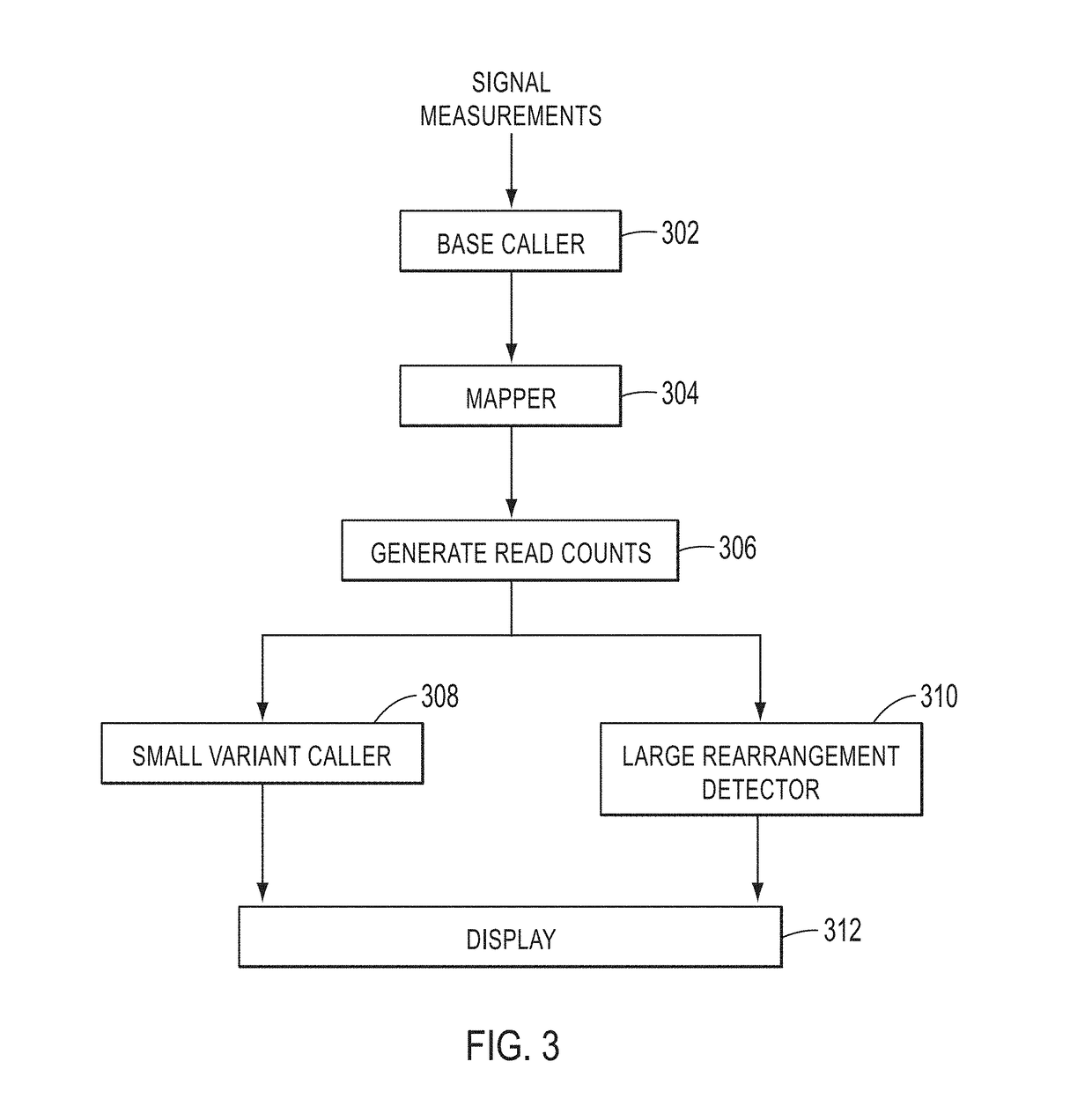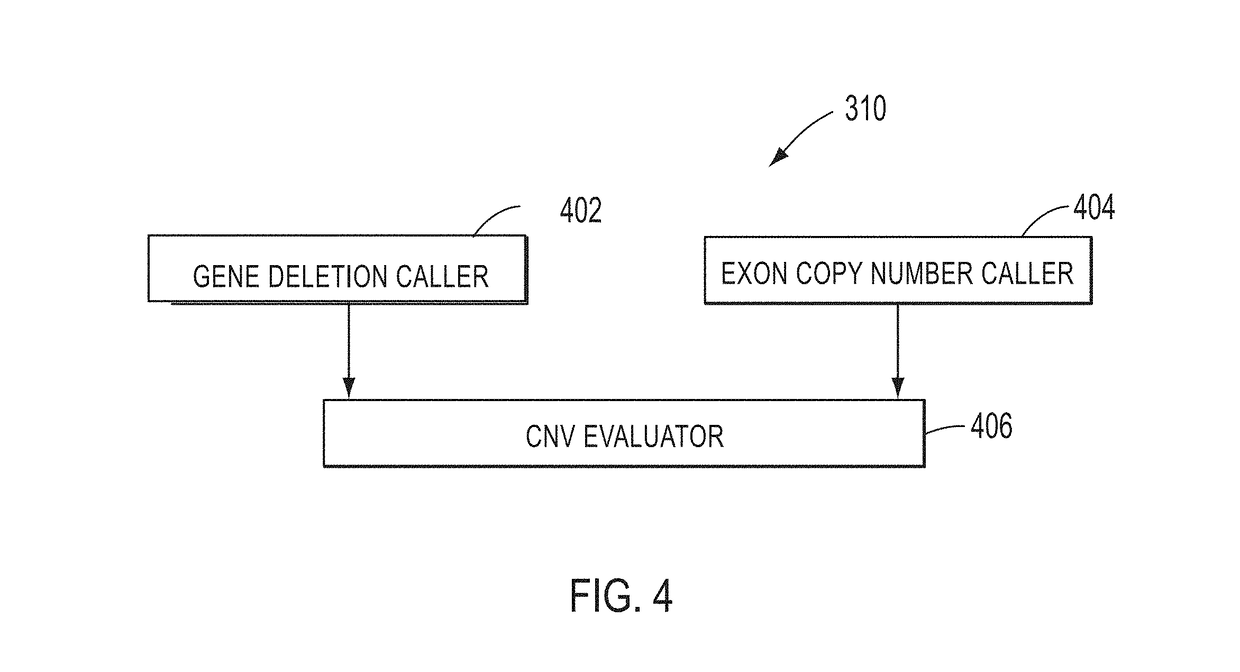Methods and systems to detect large rearrangements in brca1/2
a technology of large rearrangements and methods, applied in the field of methods and systems to detect large rearrangements in brca1/2, can solve the problems of large rearrangements such as exon level copy number variations that are difficult to detect using traditional sequencing approaches, and difficult to detect using traditional sequencing approaches, and achieve high sensitivity
- Summary
- Abstract
- Description
- Claims
- Application Information
AI Technical Summary
Benefits of technology
Problems solved by technology
Method used
Image
Examples
Embodiment Construction
[0017]In various embodiments, DNA (deoxyribonucleic acid) may be referred to as a chain of nucleotides consisting of 4 types of nucleotides; A (adenine), T (thymine), C (cytosine), and G (guanine), and that RNA (ribonucleic acid) is comprised of 4 types of nucleotides; A, U (uracil), G, and C. Certain pairs of nucleotides specifically bind to one another in a complementary fashion (called complementary base pairing). That is, adenine (A) pairs with thymine (T) (in the case of RNA, however, adenine (A) pairs with uracil (U)), and cytosine (C) pairs with guanine (G). When a first nucleic acid strand binds to a second nucleic acid strand made up of nucleotides that are complementary to those in the first strand, the two strands bind to form a double strand. In various embodiments, “nucleic acid sequencing data,”“nucleic acid sequencing information,”“nucleic acid sequence,”“genomic sequence,”“genetic sequence,” or “fragment sequence,” or “nucleic acid sequencing read” denotes any inform...
PUM
| Property | Measurement | Unit |
|---|---|---|
| threshold | aaaaa | aaaaa |
| sizes | aaaaa | aaaaa |
| acid | aaaaa | aaaaa |
Abstract
Description
Claims
Application Information
 Login to View More
Login to View More - R&D
- Intellectual Property
- Life Sciences
- Materials
- Tech Scout
- Unparalleled Data Quality
- Higher Quality Content
- 60% Fewer Hallucinations
Browse by: Latest US Patents, China's latest patents, Technical Efficacy Thesaurus, Application Domain, Technology Topic, Popular Technical Reports.
© 2025 PatSnap. All rights reserved.Legal|Privacy policy|Modern Slavery Act Transparency Statement|Sitemap|About US| Contact US: help@patsnap.com



